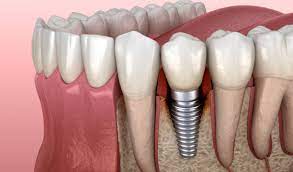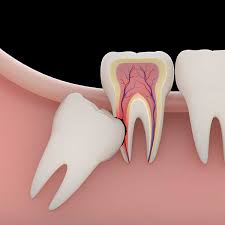Tooth extraction is a significant dental procedure, and careful budgeting helps prepare for it. Whether the treatment is anticipated or comes as a result of sudden dental issues, understanding how to manage the financial aspect ensures confidence and clarity. Budgeting begins by recognizing the various elements involved in the dental process and preparing mentally and financially.lets delve into Tooth extraction cost
The Importance of Being Prepared
Having a clear plan before undergoing any dental work helps reduce stress. Knowing what steps are included in the full treatment allows individuals to allocate resources responsibly and make informed decisions without surprises. Proper planning means not only setting aside resources but also understanding the scope of the service received.
What Budgeting Involves
Factoring in the Entire Experience
Budgeting for dental work goes beyond thinking about a single appointment. It involves considering the time, services, and environment provided. Preparation, assessment, and follow-up support all contribute to the overall experience. These elements are typically bundled into one structured offering, which should be understood when setting a budget.
Predictable and Unseen Factors
Some elements of dental treatment are expected, like initial consultations and the actual procedure. Others are less obvious, such as facility use, sterilization materials, and staff support. Good budgeting involves anticipating both the obvious and the supporting components that are essential to a complete dental experience.
Evaluation Before the Procedure
The Consultation Phase
The first step usually includes a comprehensive dental evaluation. This determines the best approach to tooth removal and whether it should be performed using a simple or more complex technique. This diagnostic stage is part of the full preparation and should be considered when planning financially.

Imaging and Analysis
To get a clear view of the situation, dental professionals often use imaging tools to assess root positions, alignment, and surrounding structures. These tools are used during the diagnostic phase and are a core part of the procedure. Budgeting for tooth extraction means factoring in the use of such technology as part of the standard process.
Procedure Planning
The Approach to Removal
The tooth’s position and condition influence the technique used. Planning helps determine if a simple or more advanced technique is needed. Either way, the procedure requires detailed preparation, a sterile environment, and careful execution—all of which are part of the full service experience.
Materials and Preparation
Every step involves materials such as tools, coverings, and safety equipment. These are used to ensure that the environment remains clean and controlled. The effort and resources needed to maintain this high standard are included in what one prepares for financially.
Facility and Staff Resources
Use of a Dedicated Treatment Space
Dental procedures take place in specialized spaces designed for hygiene, comfort, and efficiency. These rooms include advanced chairs, lighting, and sterilization setups that require regular maintenance and readiness. The use of these spaces is part of the overall process and should be considered in a budgeting plan.
Team Support Throughout the Visit
Although the procedure may be performed by one professional, a team is usually involved behind the scenes. Team members manage preparation, sterilization, scheduling, and safety monitoring. Their expertise and coordination contribute to the smooth experience and are part of the service structure included in budgeting.
Safety and Comfort Considerations
Ensuring a Comfortable Experience
One of the most important aspects of dental procedures is comfort. This involves the use of specific materials and techniques to minimize discomfort and create a sense of safety. Budgeting for this care includes recognizing that comfort tools and time spent ensuring calm surroundings are part of the process.
Hygiene Protocols and Standards
Maintaining high standards of cleanliness and safety is central to all dental work. The strict protocols followed before, during, and after the procedure require time, training, and materials. The effort behind this high level of safety is part of the broader service offering that’s accounted for during budgeting.
Support and Communication
Personalized Attention and Guidance
Communication begins before the appointment and continues through the recovery period. Professionals provide clear explanations, address concerns, and answer questions. This ongoing support is built into the overall service and included in what is planned for when setting a dental care budget.
Emotional Reassurance
Many individuals feel nervous before dental treatments. Clear communication, calm environments, and thoughtful care help create reassurance. These emotional support elements, although not always visible, are a valuable part of the experience and included in the overall budget plan.
Variations in Procedure Needs
Simpler Situations
When a tooth is easy to access and intact, the removal process may be more straightforward. However, it still requires the same level of professionalism, tools, and facility preparation to maintain safety and quality. These situations still involve full attention to every step and should be treated seriously in the budgeting plan.
More Complex Needs
Teeth that are broken, misaligned, or partially beneath the gum require advanced techniques. These require extra preparation, time, and possibly more specialized tools. Anticipating such variations is part of responsible budgeting to ensure there are no surprises during treatment.
Keeping Costs Predictable
Clarifying What’s Included
Understanding what’s included in the service helps ensure accurate budgeting. From initial consultation to the complete procedure and follow-up communication, clarity about each step prevents confusion and sets the right financial expectations.
Planning Ahead for Long-Term Dental Needs
Budgeting for dental care also includes thinking about future needs. Although the current focus may be on a single procedure, maintaining oral health often involves periodic visits and evaluations. Planning ahead creates a stable, stress-free experience across all aspects of dental care.
Long-Term Value of Planning
Reducing Stress with Preparation
Planning for dental care provides peace of mind. When all elements are accounted for ahead of time, the focus can shift to comfort and health rather than unexpected complications or concerns about logistics.
Supporting a Healthier Routine
Financial planning for dental procedures encourages proactive care. Individuals who budget for dental health tend to stay consistent with routine evaluations, catch issues earlier, and take preventive steps, resulting in better long-term outcomes.
Conclusion
Making Informed Dental Choices
Tooth extraction cost in Dubai is a routine procedure that becomes even smoother with thoughtful preparation. Budgeting for the entire process—not just the moment of extraction—ensures clarity, comfort, and confidence in the care received.
